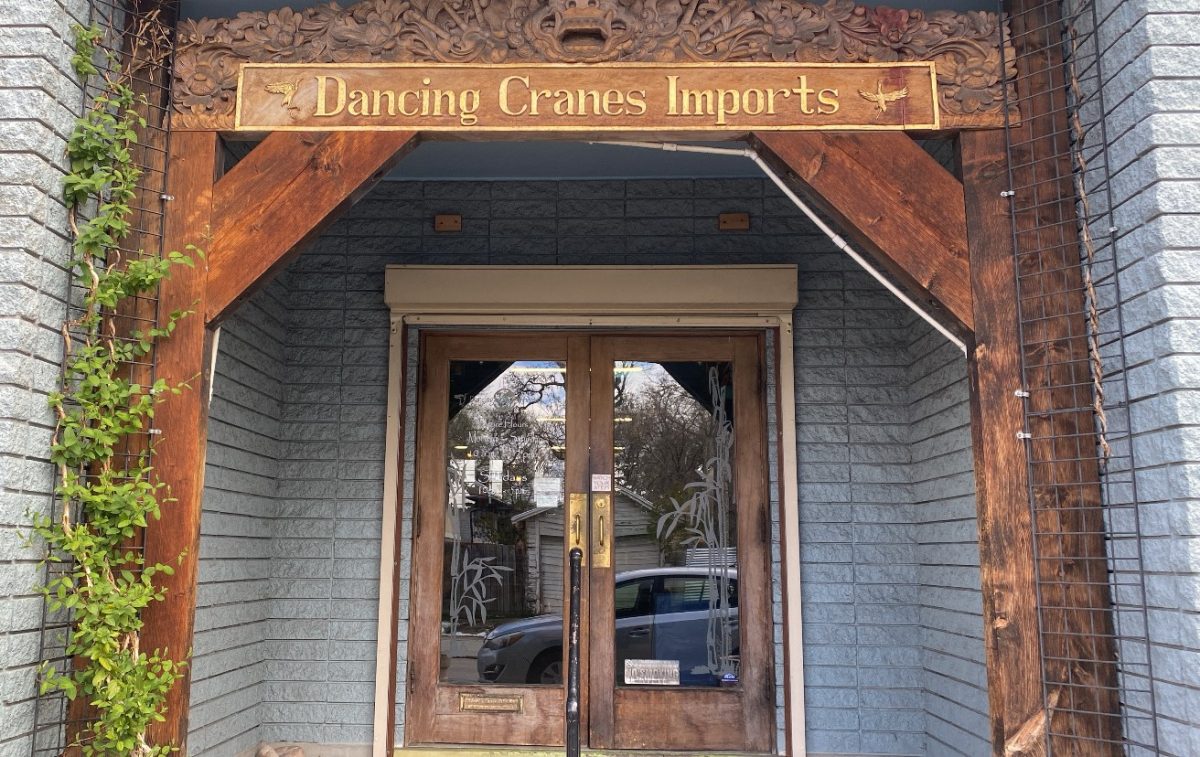A pile of painted dust and broken cinderblocks is all that is left of the 10 by 30 foot “Wall of Oppression” that stood on the Marriott Plaza last week.
At 11 Friday morning, a group of 300 to 400 people gathered together to break down the wall that symbolized hatred, oppression and discrimination.
Utah Rep. Jim Matheson and Sociology Professor Theresa Martinez spoke before the wall came down.
Matheson spoke about the wall and what it symbolized. He said that the wall was erected with human hands, and that human hands and hearts can also bring it down.
Martinez discussed Martin Luther King Jr. and how he and a group of young people confronted and changed some of the problems of discrimination in the 1960s.
“He had some pretty extraordinary allies,” she said. “Guess what? They were your age.”
Martinez said that students can and have changed problems in the past and that students now can change the problems they experience.
“A young man or a young woman is a very worthy advocate for a cause,” she said. “Will we have the courage to see the contradictions of our times?”
Martinez discussed poverty and policies that favor the few as modern examples of oppression. She ended her remarks by asking if students would continue to put bricks in the wall.
At the end of Martinez’s remarks, LaDon Roeder, who initially conceived the Writing on the Wall Project, led the group in breaking down the wall.
Students clustered together around the ropes attached to the wall, and each participant held onto a piece of the rope. Roeder counted down from five, and at the end of the countdown, the wall came down with an abrupt crash.
“That was awesome, excellent, wonderful,” Roeder said right after the wall came down.
Roeder encouraged all present to take a piece of the wall to serve as a reminder to continue to fight against oppression and make a difference.
After the wall came down, many students stayed in the rubble, smashing the cinderblocks that did not break when the wall came down.
“I don’t think it could have come off better than it did,” Roeder said. He said people came up to him and told him they had chills during the countdown. “I’m a little bit overwhelmed at how successful it is.”
Roeder thought of the idea four years ago when visiting the Wall of Remembrance at the United States Holocaust Memorial Museum. This wall contains 3,000 tiles painted by American children, and it contains messages of peace and hope. The project at the U began a few months ago when the Writing on the Wall Project Planning Committee was formed.
Roeder wanted to give students a tangible experience in confronting oppression when he decided to build a wall on campus.
“I personally have felt that experience is one of the best teachers,” he said. “It often brings an emotional connection to an experience.”
Students at the wall breaking were given fliers that told them how to take action and personally fight against oppression.
The Writing on the Wall Project was the main part of End Discrimination Week, which included a diversity fair, speakers and movies that addressed issues of oppression.
“To have a whole week of activities around it made it even more purposeful,” Roeder said.
Students, student groups and groups outside of campus had the opportunity to add a cinderblock to the wall. Information tables were in the Union where students could pick up blocks, and some student groups organized a night when they got together and painted the cinderblocks.
The blocks had different words and phrases written on them that represented an act of oppression in the lives of students or in history. The cinderblocks addressed issues of ageism, feminism, religion, racial discrimination or major acts of oppression during history.
“A lot of the bricks touched me personally,” said Jessica Peterson, who helped plan the project. “Each of those bricks represent an individual life and experience. It was good to see that other people recognize this as a problem and that people want to have it stopped.”
Seeing the wall coming down also had a personal connection for Peterson.
“So many of my associates and friends were helping me pull it down,” she said. “I was very moved by the event. It’s made a big difference in my life.”











